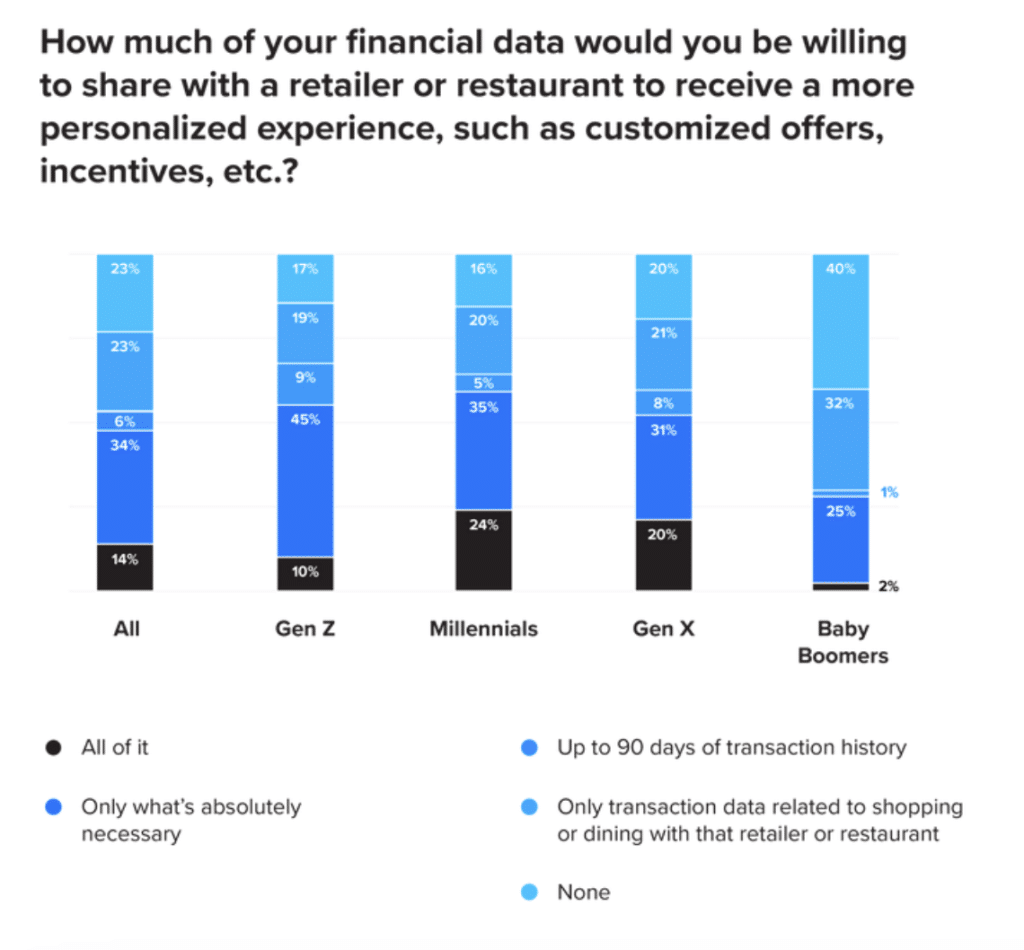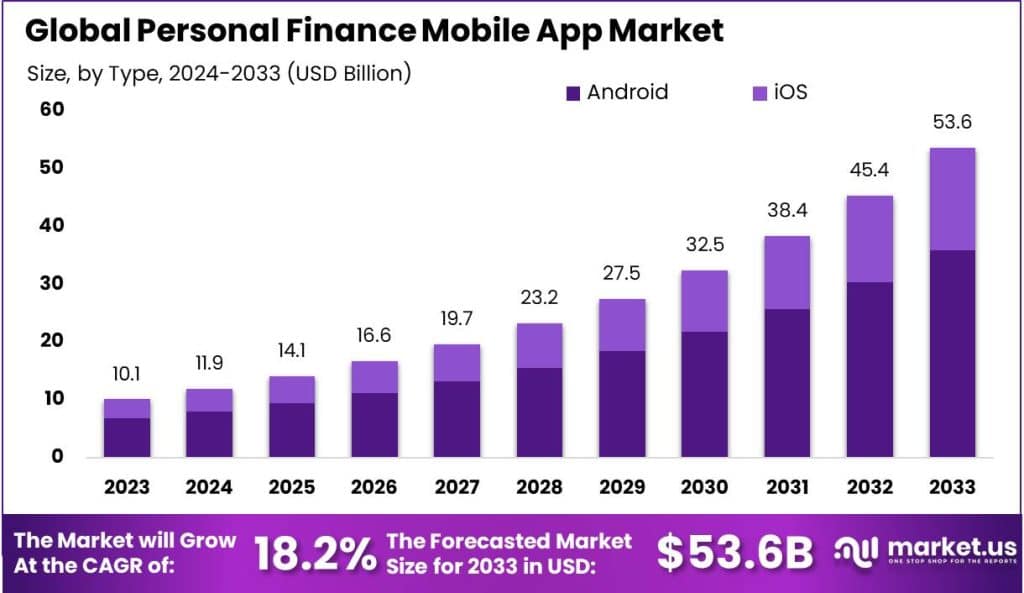- Trend 1: Building Trust and Credibility in Fintech Marketing
- Trend 2: Personalization and Customer-Centricity in Fintech Marketing
- Trend 3: The Rise of Mobile-First and App-Based Fintech Marketing
- Trend 4: Leveraging Content Marketing and Financial Literacy in Fintech
- Trend 5: The Strategic Use of Social Media and Influencer Marketing in Fintech
- Key Takeaways
- Frequently Asked Questions (FAQs)
With each passing year, fintech seems to grow more competitive. An amalgam of the words “finance” and “technology,” fintech is constantly evolving, with new innovations changing the way software providers market their products.
Those innovations include personalization and customer-centric marketing strategies. In 2025, though, personalization goes far beyond simply inserting a customer’s name at the top of an email. To be competitive, fintech brands are rethinking their playbooks, ditching full-funnel processes in favor of personalizing their efforts to build trust and drive conversions.
Let’s dive into the top five marketing trends shaping fintech marketing in 2025.
Trend 1: Building Trust and Credibility in Fintech Marketing
Fintech is more than software — you’re dealing with people’s money. As a result, marketing in 2025 is all about building trust with the consumers interacting with your brand. Whether you’re offering advice or asking customers to provide payment details to use your platform, it’s important to lead with transparency, security, and complete respect for privacy.
Here are some key statistics relating to consumer trust:
- When it comes to their financial data, boomers are more likely to completely trust their financial service provider, at 47%, than Gen Z consumers, at only 38%.
- 86% of customers say their bank takes measures to protect them from fraud and scams.
- Between $800 million and $2 trillion is laundered globally each year, highlighting the need for secure fintech channels and marketing messaging that builds consumer trust.
Clear communication is the first step. Financial topics can be complex for many, whether it’s cryptocurrency investments or finding the best annual percentage rate (APR) on a credit card. Simplifying those concepts with easy-to-read language can provide a solid foundation, while visual trust indicators like badges and certification logos can help reassure new customers that their information is safe with you.
Many fintech marketers already incorporate testimonials and user reviews as social proof, but in 2025, brands are taking this to the next level. By adding influencer quotes, expert endorsements, and success stories to your strategy, you can make your brand messaging even more persuasive.
Remember, too, that compliance is always part of the conversation in a heavily regulated industry like fintech. It’s important that your marketing team bake compliance into your brand messaging to demonstrate that you’re a trustworthy brand.
Trend 2: Personalization and Customer-Centricity in Fintech Marketing
Generic marketing messages won’t suffice with today’s savvy customers, who have grown used to personalized messaging that speaks to their interests today, not a few months ago. Here are a few statistics demonstrating the power of personalization:
- More than half (54%) of consumers want financial providers to use their data to personalize their experience.
- Artificial-intelligence (AI)-powered personalization can increase conversion rates by as much as 30%.
- 24% of millennials would be willing to share all their financial data in exchange for a personalized experience.

Source: MX Technologies
With this in mind, how do you personalize your messaging for customers across all devices, platforms, and moments in the customer journey? Today’s successful personalization strategies include:
- Segmented targeting based on factors like user behavior, financial goals, and demographics. For example, you’d likely target retirees differently than you’d target a recent college graduate.
- Creatives that are unique to each channel. You might create unique images and messaging for email, app, social, and search.
- Predictive analytics that suggest products to a user based on that user’s unique interests.
- Behavioral retargeting that presents compelling display ads to users based on prior interactions with your brand, going beyond demographics and other traditional targeting criteria.
Some marketers are shifting to innovative solutions that are built for performance, not just awareness. These tools can be the antidote to issues like soaring costs and creative fatigue, both of which are negatively impacting campaign effectiveness. Look for tools that offer cross-channel optimization, dynamic creative testing, and precision targeting.
Download Taboola's Creative Best Practices for 2025 Playbook
In short, fintech marketers in 2025 are focusing on building long-term relationships with customers, rather than chasing clicks.
Trend 3: The Rise of Mobile-First and App-Based Fintech Marketing
More than ever, consumers are picking up their mobile devices when they need to manage their finances. In fact, the global personal finance app market is expected to grow by 18.2% by 2033.

Source: Market.us
Here are some other notable stats related to mobile app use:
- By 2027, global app payments are expected to top $1 trillion, driven by both consumer adoption and retailer integration.
- Since 2020, global app downloads have increased by 65%, with nearly 300 billion downloads expected this year.
- 55% of bank customers use mobile apps more than any other channel for account management.
Banking is only the beginning, though. From investing to paying rent, consumers are gravitating toward mobile. Not only does it make it easy to manage finances on the go, but for younger demographics, mobile is the primary gateway for everything from making purchases to researching products. That shift is requiring marketers to further prioritize mobile.
That said, a mobile-first approach means more than just responsive design: You’ll also need to optimize the app experience from start to finish, ensuring that each step of the customer journey is user-friendly.
To satisfy consumer demand, innovative fintech marketers are currently investing in:
- App store optimization: For fintech marketers, visibility means ensuring your app is optimized for all relevant app stores. Descriptions should also be optimized to ensure the app gets in front of the right users.
- Push notifications: Once an app is installed, it can easily be forgotten. Push notifications can keep users engaged, but it’s essential to deliver timely, relevant messages without annoying your audience.
- In-app messaging: Personalized nudges like, “Don’t forget to track your expenses” and, “You’re halfway to your savings goal” can provide the individual coaching many fintech customers seek.
- Mobile-specific creatives: Are your images and videos optimized for mobile? Make sure you’re also creating interactive content that engages your customers.
Once your mobile app is optimized, it’s time to get the word out about it. In this area, fintech marketers are looking at a variety of approaches. Mobile app SOCIOPAL, for instance, increased downloads by 30% after creating a few relevant blog posts for the app’s target audience, which included a strong call to action with a free download, then distributing them across premium publisher networks.
Trend 4: Leveraging Content Marketing and Financial Literacy in Fintech
The complicated nature of financial topics can serve as a roadblock for the average consumer. That’s why educational content will always convert well. In 2025, fintech marketers are investing in blog posts, videos, webinars, and tools that answer frequently asked questions. The key is to not only educate, but boost a customer’s confidence in your brand.
Here are some examples of standout content you can add to your marketing strategy in 2025:
- Explainers on APRs, budgeting, and investment basics.
- Interactive tools like retirement calculators or credit score simulators.
- Search engine-optimized blog posts answering specific financial questions.
- Video tutorials embedded within onboarding sequences.
Thought leaders can also give your brand a boost. Chances are, members of your team have specialized expertise on various topics, so have them create blog posts or videos educating consumers on niche financial subjects. Consider the following:
- Only 54% of U.S. adults say they know a great deal or fair amount about finances.
- While 75% of adults surveyed believe they can find their credit report, only 59% are confident in their ability to create a budget.
- In a recent financial literacy test, less than one-third of respondents answered five of seven questions correctly.
The key is to position your educational content as informational, not sales-y. By doing that, consumers will see your brand as a partner, not a company trying to sell services. This approach attracts users who will become long-time brand loyalists rather than clicking, making a purchase, and moving on to another platform.
Trend 5: The Strategic Use of Social Media and Influencer Marketing in Fintech
Financial marketers always need to keep an eye on compliance when posting on social media, but while that might once have held marketers back, in 2025, it’s clear they’ve fully embraced social media, leaning into platforms like Instagram and YouTube as a way to reach today’s consumers.
Here are some interesting statistics regarding social media and influencer marketing in the finance sector:
- Nearly one third of Americans turn to social media for financial advice, with younger generations even more likely to consult social platforms on money matters.
- Financial services influencer marketing is particularly effective, bringing a return on investment (ROI) of $5.78 for every dollar spent.
- Fintech-focused influencer campaigns can bring 11 times the return on investment as traditional digital advertising.
- 92% of consumers trust influencer recommendations over traditional advertising.
Top social media approaches in 2025 include:
- Short-form video content: Fintech marketers are using video to break down complicated financial topics like compound interest and investing. You can also create videos offering personal finance hacks such as paying off student loans or saving for retirement.
- Real-time brand engagement: Finance routinely makes the news. Responding to the headlines or industry trends can help you reach users who are following those hashtags.
- Authentic influencer partnerships: Collaborating with personal finance creators with solid followings can help get your brand in front of consumers. However, it’s important to ensure those partnerships are authentic, and that the creator uses the product and provides an honest review.
- Data-backed performance tracking: In 2025, focus has shifted away from tracking impressions and clicks. Instead, fintech marketers are paying attention to app installs, conversions, and customer retention.
Frustrated with diminishing returns from their social media efforts, most marketers are testing out other formats. For many marketers, that means honing their social media targeting. For fintech marketers, one possible option is to collaborate with creators in a way that directly ties to app installs or account signups.
Key Takeaways
The fintech space in 2025 is both fast-moving and competitive, but top marketers are rising to the challenge. Building trust and informing customers is still a top priority, but marketers are finding that personalization is necessary to grab attention. As consumers continue to prioritize mobile device use, apps are no longer products: They’ve become a crucial part of a fintech marketer’s strategies. Social media is still important, but content like short-form videos and influencer-led messaging dominates.
Frequently Asked Questions (FAQs)
What are the most effective digital advertising channels for fintech in 2025?
Search and social are still staples of most fintech marketing strategies, but multitouch strategies lead the way in 2025. It’s important to follow consumers throughout their buying journey using tools like influencer partnerships and performance-focused ad networks that take advantage of the open web.
How can fintech companies acquire and retain customers cost-effectively?
It starts with winning over a new customer, and that takes precision targeting and mobile-first marketing campaigns. From there, educational onboarding can help build trust and boost customer retention. Fintech marketers who invest in lifecycle marketing can reduce churn, so it’s important to have marketing strategies for each stage of the customer journey.
What are some successful examples of fintech digital marketing campaigns?
AIG Israel was aware of the challenges it faced in educating users about mortgage insurance, so they leaned into video to help drive conversions. As a result, they saw a 50% uplift in purchase intent in the first 30 days.
How is AI impacting the fintech marketing landscape?
AI’s impact is being felt in almost every stage of marketing, from creative testing and dynamic ad placement to churn prediction and customer support. Fintech marketers are also using smart automation and predictive analytics to deliver the right message at the right time.
What are the key metrics for measuring success in fintech digital marketing?
Launching a marketing campaign is only the beginning. Fintech marketers need to keep an eye on results to better inform future efforts. Some key performance indicators to watch in 2025 are:
- Cost per acquisition.
- Customer lifetime value.
- Conversion rate.
- Cost per app install.
- Engagement-to-conversion ratio.
- Return on ad spend.
- Loan approval rates.
- Churn rate.



